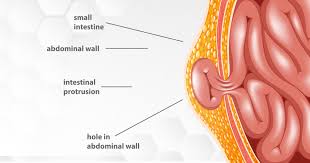
Understanding Perianal Fistula: Causes, Symptoms, and Treatment Options
Perianal fistula, a persistent and often misunderstood medical condition, can cause significant discomfort and affect quality of life. In this article, we will explore what a perianal fistula is, the causes, symptoms, and the various treatment options available. We will also discuss when surgery becomes necessary and how to seek expert help.
What Exactly Is a Perianal Fistula?
A perianal fistula is an abnormal tunnel or connection that develops between the inner part of the anal canal and the skin around the anus. This can lead to chronic pain, discomfort, and recurring infections. It usually arises as a complication of an abscess near the anus or rectum, which fails to heal completely.
A Look Back at the History of Fistula Management
Historically, fistulas have been documented since ancient times. They were often a cause of debilitating pain, and traditional medical texts described painful and prolonged methods to treat them. With advancements in medical science, there are now more effective and less invasive treatment options available.
What Are the Symptoms of Perianal Fistula?
The symptoms of a perianal fistula vary depending on its type and severity, but commonly include:
Persistent Discharge: Pus or blood may be discharged from an opening near the anus.
Pain or Swelling: Pain is often present around the anus, particularly when sitting or during bowel movements.
Recurring Abscesses: Multiple or recurring infections that may lead to abscess formation.
Irritation and Redness: The skin around the anus can become irritated and sore.
Fever: In cases where an infection is present.
Causes of Perianal Fistula
The primary cause of a perianal fistula is usually an untreated or improperly drained anal abscess. However, there are several contributing factors, such as:
Chronic Abscesses: Persistent or poorly treated abscesses can lead to fistula formation.
Inflammatory Bowel Disease (IBD): Conditions like Crohn’s disease can increase the risk of fistulas.
Infections: Repeated infections near the anus can cause a fistula to develop.
Surgical Procedures: Complications from previous surgeries in the anal region can also contribute.
Diagnosis: How Is a Perianal Fistula Detected?
Diagnosing a fistula often requires a physical examination by a specialist. In some cases, advanced imaging techniques like MRI or endorectal ultrasound may be used to get a clear picture of the fistula’s location and complexity.
Managing Perianal Fistula: What Are Your Options?
NonSurgical Measures
For uncomplicated or earlystage fistulas, doctors might recommend nonsurgical treatments:
- Antibiotics: Used to manage infection and inflammation.
- Drainage of Abscess: If an abscess is present, it may be drained surgically or using minimally invasive methods to prevent further complications.
- Dietary Adjustments: A highfiber diet can help avoid constipation and reduce straining.
Home Care Tips
Maintain Hygiene: Keep the area clean and dry to reduce the risk of infections.
Avoid Heavy Lifting: Prevent undue strain on the abdominal muscles.
Manage Bowel Movements: Use stool softeners to prevent constipation.
When Is Surgery Necessary?
In cases where the fistula is complex, recurrent, or causes significant pain and discharge, surgery is often recommended. Surgery is aimed at removing the infected tissue and creating a pathway for proper healing.
Surgical Options for Perianal Fistula
- Fistulotomy: This is the most common procedure for superficial fistulas, involving opening the fistula tract to allow it to heal naturally.
- Seton Placement: A medical thread is inserted through the fistula to keep it open, allowing it to drain and heal over time. This is useful for high or complex fistulas.
- LIFT Procedure (Ligation of Intersphincteric Fistula Tract): This involves disconnecting the fistula tract while preserving the sphincter muscles.
- Advancement Flap Surgery: A more complex option for chronic fistulas, where healthy tissue is used to cover the internal opening.
- Fibrin Glue and Plug: These minimally invasive methods involve injecting a special glue or placing a plug to seal the fistula.
How to Contact Us for Consultation
At (https://www.surgeondrimtiazhussain.com), we offer expert advice and tailored treatment plans for perianal fistula.
Conclusion
Dealing with a perianal fistula can be challenging, but understanding the condition and getting prompt treatment can prevent complications. Whether through medical management or surgery, seeking timely care can significantly improve outcomes. Our team is dedicated to providing comprehensive care for every patient.
Take control of your health and consult a specialist if you suspect a perianal fistula. Early intervention can lead to a quicker recovery and prevent future complications.




